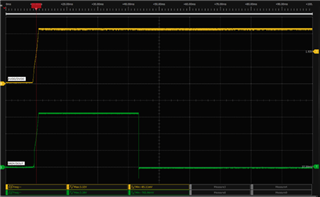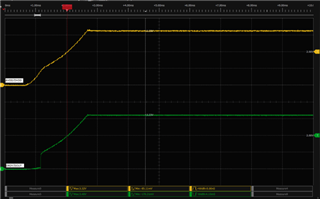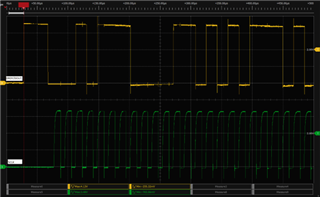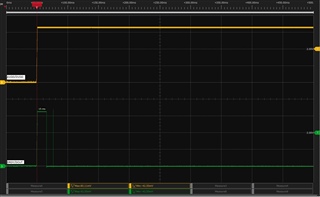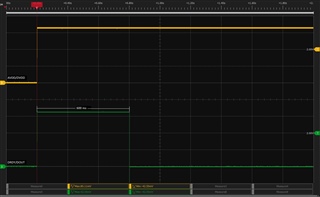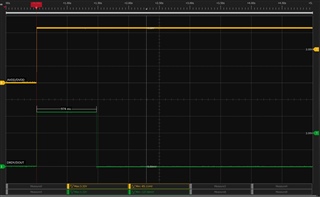Tool/software:
Hi team,
We have a problem with the ADS1225 on some boards.
When we apply the supply voltage, the DRDRY
pin remains high for 17 ms. Temperature of ADS1225 is 20 degrees. Image ADS1225(20 degrees).
When we cool down the ADS1225 to 0 degrees, the DRDY pin remains high for 442 ms after the supply voltage is applied.
Image ADS(0 degrees).
Can you tell me what could be the reason for this?
Most boards do not have this problem.
DVDD/AVDD = 3.3 VDC bypass capacitor 4.7 µF
MODE = 3.3 VDC
BUFEN/TEMPEN = GND
Image ADS(20 degrees)
Image ADS(0 degrees)
Your reply would be highly appreciated!
Best regards,
Richard Schreck


